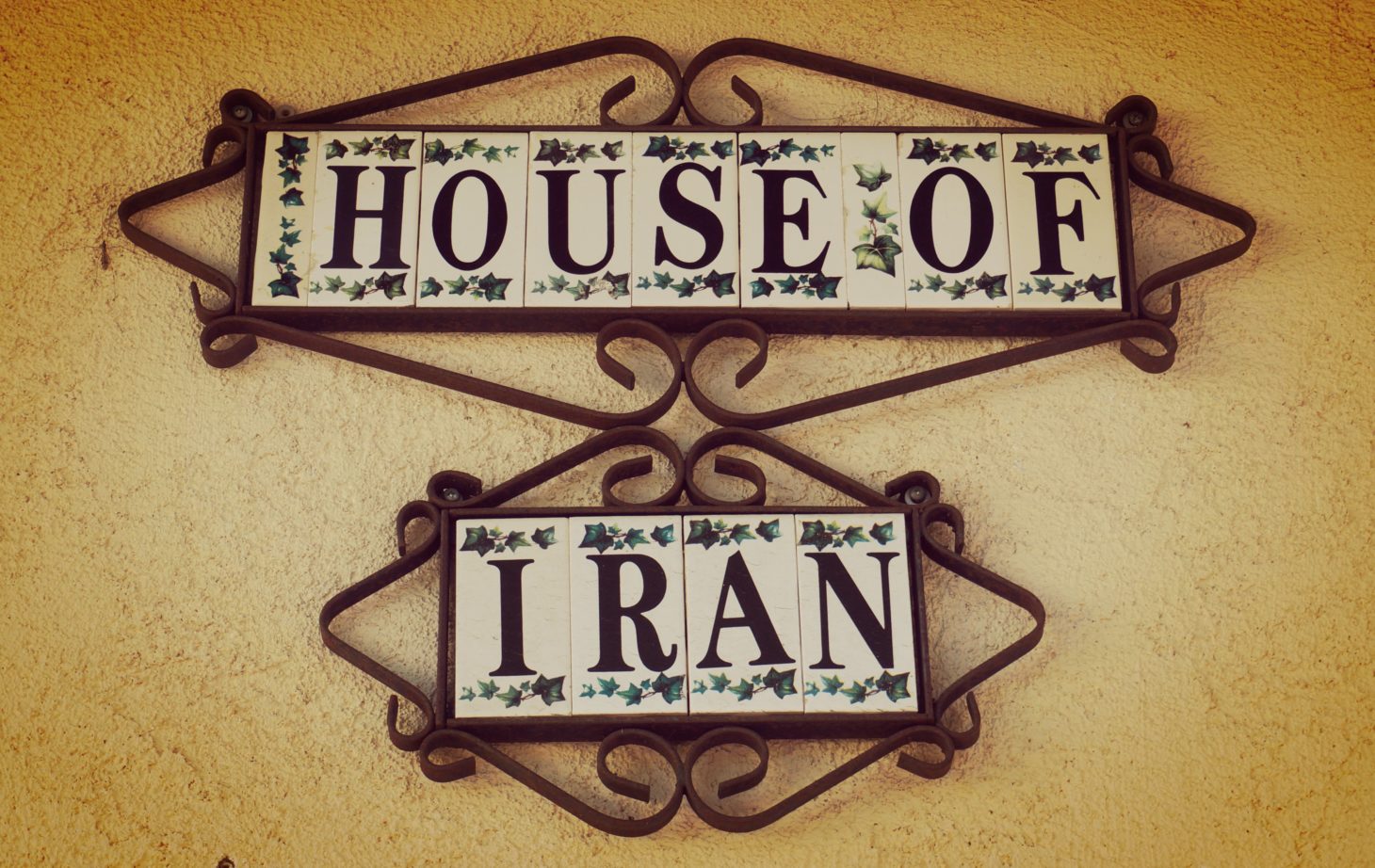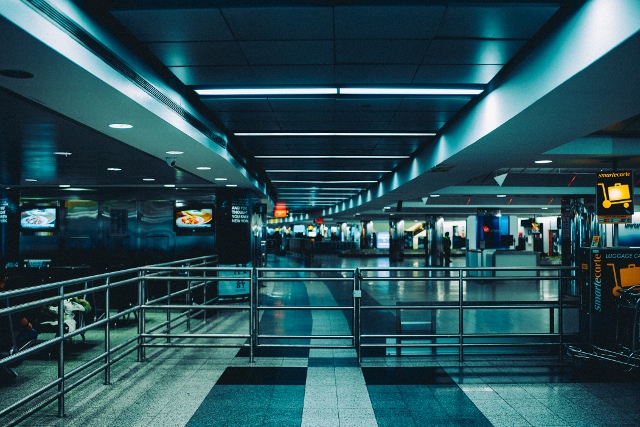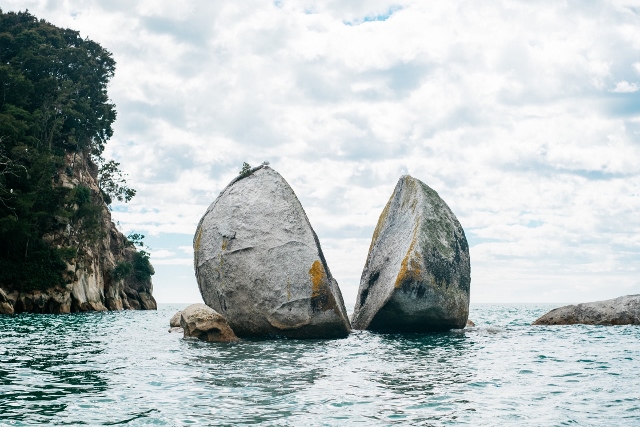Last week I attended the House Of Iran Nowruz event in San Diego. Every year, the event draws hundreds of Iranians from all around town to Balboa Park. The setting couldn’t be more beautiful. Balboa Park at this time of year is filled with blossoming trees and flowers. The House of Iran is nestled among the International Cottages. The umbrella organization responsible for the creation of the International Cottages is the House of Pacific Relations. I absolutely LOVE their mission statement:
To create a spirit of understanding, tolerance and goodwill among the various national groups represented in the community.
What a lovely idea!
As you enter the event, you are greeted by the smell of fresh Kebab on the grill. The mouthwatering aroma fills the air. It’s really no wonder that the long line is constant at this event.
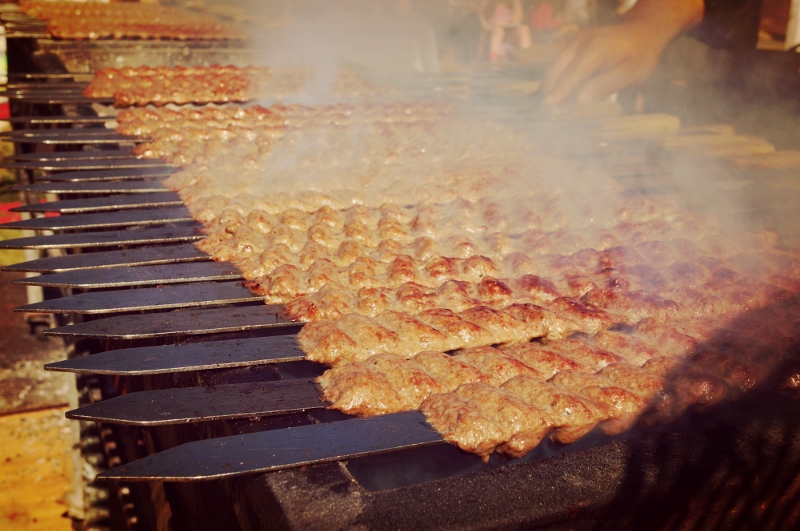
People of all ages are gathered on the lawn. Entire families, with multiple generations representing, come here to celebrate the arrival of Spring. There’s non-stop entertainment: Stage performances by local artists and a traditional dance group as well as music and dancing for hours. I attended the event with my husband and my good friend, Michelle (both Americans), and I enjoyed seeing the festivities through their eyes. At one point Michelle said: “Wherever Persians gather, there’s always a party.” To which my husband replied: “Oh yes! I love all the dancing!” This put a smile on my face! And I was struck by the contrast between these statements and what most Americans know of Iran and Iranians through US media. Iranians are in fact, outgoing, fun-loving, and hospitable people. Unfortunately you wouldn’t know that if you haven’t interacted with them or have been in there communities.
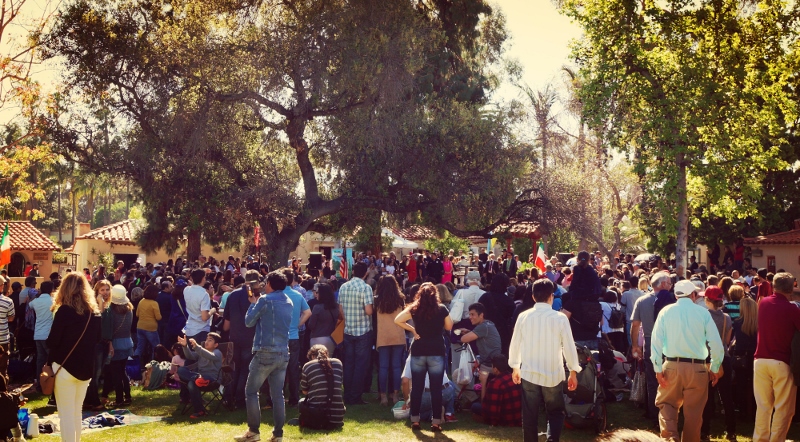
Iranians do love a good celebration. Sometimes I think it’s because a celebration gets people in the community together. It’s an excuse to gather and to be with other Iranians. Living outside of Iran, makes these gatherings even more potent or maybe even more necessary.
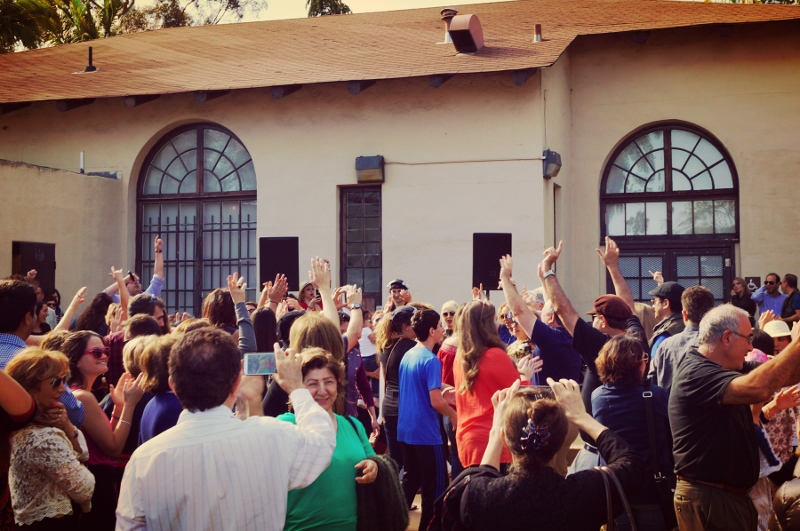
Walking around at the event, I noticed something else. As we walked up the path to the front door of the House Of Iran, I noticed the flags on both sides of the door. The American flag hangs on the left side of the door and the Iranian flag on the right.
Now I want you to take a moment and think about how you feel when you see the flag of your country. Do you experience a sense of pride? Do you feel touched? Does it remind you of anything? What does it represent for you? A sense of patriotism? Does it represent freedom?
Here’s what I thought when I looked at the Iranian flag: “This isn’t really Iran’s flag.”
You see, this is the old/pre-revolution flag of Iran:
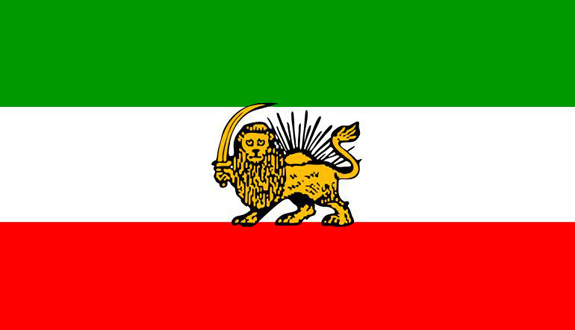
And here’s the current flag of the Islamic Republic Of Iran:
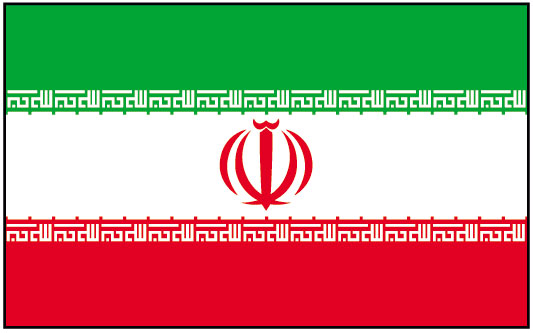
And this is what’s hanging at the House Of Iran:
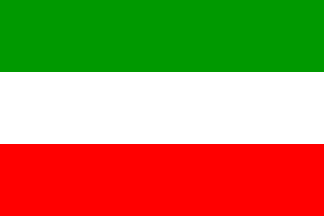
Confusing? Let me try to explain.
The first flag has the emblem of the lion and the sun (Shir-o-Khorshid) in the center of it. This emblem dates back to Babylonian astrology and became a popular symbol of Iran in the 12th century. These days most people associate it with the pre-revolution monarchy and some groups who oppose the current regime still use this flag to express their opposition.
The second flag represents the Islamic Republic of Iran. It was adopted in the mid 1980s, shortly after the revolution. The emblem is a geometric and symmetric form of the word Allah (the Arabic word for God). Also, written in white, along the green and red edges of the flag, is the phrase Allah-o-Akbar (also in Arabic), repeated eleven times.
Are you starting to see the predicament…?
The House Of Iran is a place to showcase and share Iran’s rich history and culture and they do a remarkable job at that, hosting thousands of visitors every year. They are also a non-profit, non-political and non-sectarian organization. I placed a call to them to find out more about how they came up with the decision to display a flag without either emblem. I was curious about the process and the conversation around it. I have not been able to get in touch with any administrators at the House of Iran as of yet (I will keep you posted if I do), but their process seems easy to understand and to follow. The only way to take a neutral stance is to display the flag without any symbols.
A number of years ago, I was at an Iran World Cup soccer qualifying game and the Iranians cheering for their team were waving all three flags. Even inside Iran, the relationship of Iranians with their country is fraught with drama and complications. Iranians are constantly struggling to defend the country while denouncing the actions of the government. It’s exhausting! Here in the United States, I find myself cringing whenever Iran makes the news, because I almost always feel misrepresented. My gut reaction and initial impulse is to say: “Please come over to my house. let me make you a meal. Let’s sit down and talk. We’re not all radicals, or Muslims or terrorists”. Our country was forever changed by a revolution. The 8-year war with our neighbor Iraq almost cost us our spirit. Iranians live in exile and as immigrants all over the world. Most of us have not even begun to deal with the trauma of our displacement. Our relationship with our country is complicated to say the least. The current flag (or the old flag) doesn’t represent all of us. What unites us is the love for our country, our people, our culture and our history.
Let me ask you again: What do YOU feel when you see the flag of your country? It saddens me that I don’t feel connected to the flag of Iran. The current flag is representative of all of my scariest memories of my childhood. It represents the country my family and I escaped from. The neutral flag is just that; it’s neutral and it doesn’t really touch me in anyway. The old flag is the one I remember growing up with and so emotionally speaking, it resonates most with me. But I’m not in agreement with the current representation of it. This is what happens when your country goes through what my country has gone through. There’s a sense of loss that’s hard to explain to outsiders and it’s sometimes even hard to understand for me. How can I miss a place I don’t want to live in. How can I long for a place I only spent 10 years in? How can I love a place when I disagree with the extremist views of it’s government?
For me personally, the love for my birthplace has nothing to do with the current day Iran. I was 10 years old when I left the old country and I have not been back in more than 35 years. My love for Iran is a nostalgic one. It’s fading memories of my childhood home. It’s pictures in my mind of family vacations by the Caspian Sea. It’s my grandparent’s love and attention. It’s aunts and uncles and numerous cousins, some of whom I haven’t even met yet. It’s an idea of a place where my soul might feel at home in a way it never has any place else. I would like to return there some day….I’m not at all sure when that day will be.
I would love to hear from you! Tell me about the love for your country. What do you feel when you see your flag? Share your experience with me and others below. 🙂
